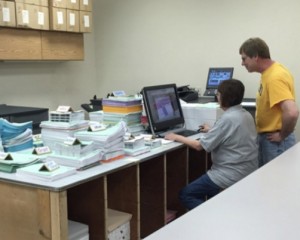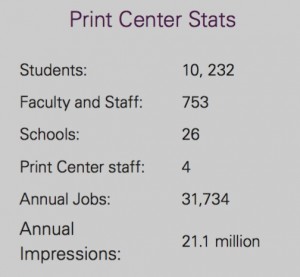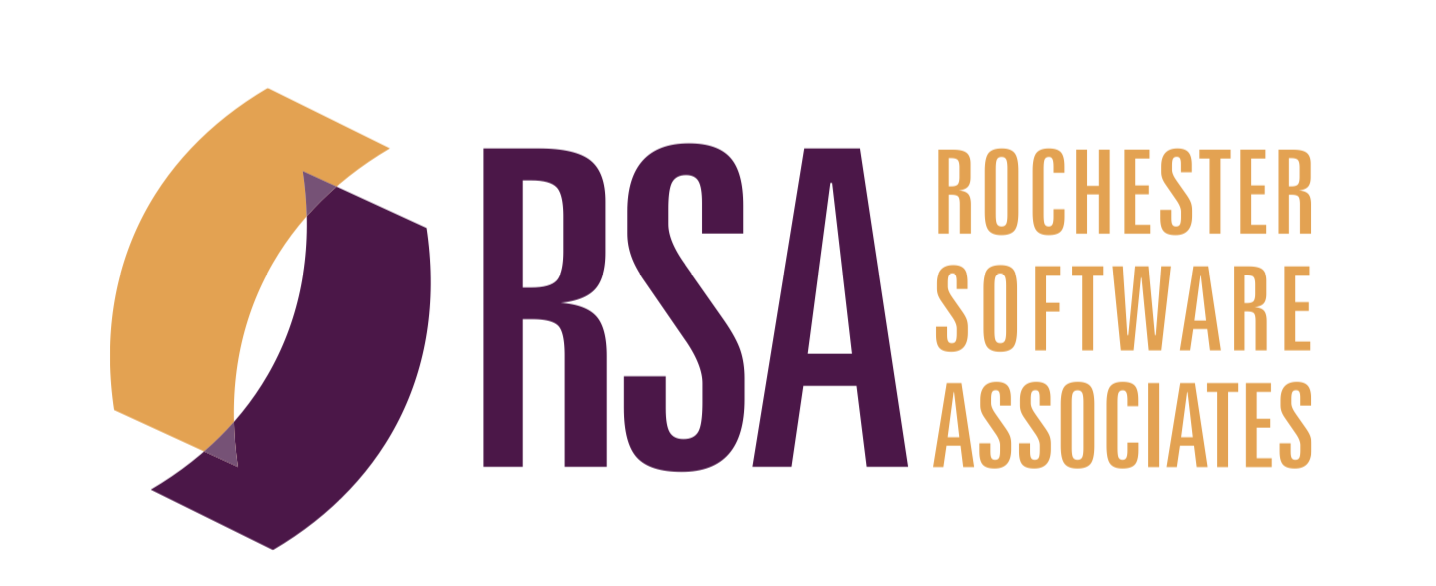Customer Background/Solutions Overview
 The Sheboygan Area Schools Printing and Graphic Services department provides printing, publishing, design services and document management to all academic, administrative, support staff and af liated organizations of the district.
The Sheboygan Area Schools Printing and Graphic Services department provides printing, publishing, design services and document management to all academic, administrative, support staff and af liated organizations of the district.
The four employee department serves over 10,000 k-12 students and 750 teachers at 26 schools. Typical jobs include everything from spiral and comb-bound books, to textbook supplements, subscription-based teaching resources, brochures, yers, posters and more. The Print Center also serves Sheboygan Community Recreation Departments and the Sheboygan Theatre Company’s 15 to 20 employees.
“Like many in plants, we were facing extinction if we didn’t change,” explains Ryan Glaeser, Supervisor of Printing and Graphic Services. “In 2009, the district was facing another budget de cit, and asked each department for recommendations on how to operate with less.”
For easy access to product information, sales presentations, cases studies, vertical messaging and more, sign up for an RSA partner resource portal account.
To stay continually abreast of RSA and in-plant news, tips, and content, subscribe to our newsletters.
Glaeser penned a letter outlining what at an all-encompassing, Web to print solution could do for his print department and how it could save the district money year after year by providing greater ef ciency, keeping more work in house and reducing the need for many of the smaller printers and copiers throughout the district.
“Today, we’re facing another budget de cit,” says Glaeser. “Fortunately, the program we implemented years ago should continue to protect our print shop from cuts.”
Too much paper. Too many touches.
Before implementing a Web to print solution, the print department was processing virtually all work manually using a paper requisition. They produced between 1-1.5 million impressions a month with a turnaround of three to ve days, including transit. Teachers had to ll out a three-part NCR form, print a hard copy original at their home school, then send both pieces to the print center’s central location.
Once it was received, the print center staff would sort and assign the job. An operator would then interpret what the user was asking for, often with missing information. Once printed, the operator would manually calculate the cost of the job, write it on the form, keep a copy, and send the finished product back to the user’s school.
At the end of the month, Glaeser then manually added up all of the charges per location and generated a report for chargeback. This accounting process took up to a week to nish. The manual process was extremely inef cient and restricted the staff and hardware from operating at peak levels.

Web to print put teachers in control.
In 2010, Sheboygan Area Schools implemented RSA’s WebCRD. Immediately, they saw two major improvements. First, teachers no longer had to print a hardcopy to submit a job, reducing the volumes printed on remote copiers and allowing each location to reevaluate their onsite printer and copier needs.
Second, the use of SurePDFTM and direct submission shaved off front-end turnaround time by eliminating transit and font issues. Direct submission meant jobs were instantly in production.

It’s all about the software.
At rst WebCRD fed the print department’s three older production printers. “Aging hardware that needed frequent repairs was preventing us from getting the most from our system,” explains Glaeser.
“In 2014 we bought brand new printers and eliminated all of the downtime we had been experiencing with the older machines. But really, it’s not about the machines. What we’re capable of as a print shop comes from the software on the front end doing all of the work.”
Turnaround fast enough to train teachers on the fly.
Now the system is so easy to use, some teachers are actually submitting the same job three or four different ways to experiment with system capabilities and get work back that’s most useful to them. Turnaround is so fast, new teachers who haven’t been through formal training are able to learn on the y by using the system themselves.

Print Center results– delivering more and operating for less.
Upon implementing WebCRD, the print department reduced touches and turnaround time and was immediately able to handle an additional 3.5 million impressions annually without adding staff.
Operators went from handling each order as much as ve times to handling most jobs just once. Turnaround time has gone from more than three days to less than 24 hours.
Reduced reprints. Decreased costs.
Since WebCRD was implemented, the daily department rework is now less than one job per week, and that one is usually the result of user error during ordering.
The print department’s ability to produce more volume in a shorter time period has allowed school locations to reduce their local printer/copier needs and purchases and send the vast majority of their volume to one central location.
Better forecasting for budgeting and future needs.
Because the print center can accurately pinpoint and forecast user patterns and needs, Principals can now prepare more accurate budgets and the print center can better position itself to meet users’ future needs.

